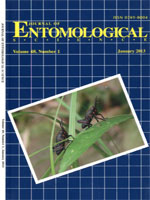Studies were conducted in Georgia and North Carolina to determine the long-term growth impact of pine tip moth, Rhyacionia spp., attacks on loblolly pines which had been treated with different combinations of insecticides for tip moth control, herbicides for control of competing vegetation, and fertilizer. Height, diameter, and volume responses were significantly greater for tip moth and weed control at age 5, both in Georgia and North Carolina. There was no evidence of a positive response to fertilizer. The largest responses were due to tip moth control, which was the only treatment that retained a significant response through the termination of the study at age 15 in Georgia and age 20 in North Carolina. Stand volumes continued to increase on the tip moth control plots throughout the study with average gains of 3.1 m3/ha/yr (43.8 ft3/acre/yr) at the Georgia site at age 15 and 3.2 m3/ha/yr (45.8 ft3/acre/yr) at age 20 at the North Carolina site. Trees receiving tip moth control also had significantly better form than untreated trees when evaluated at age 5, which may be reflected in higher quality and more valuable forest products at harvest. Treatment responses observed in this study clearly show that tip moth control can provide benefits equal to or greater than other commonly used cultural treatments, and may be necessary to realize anticipated gains from intensive management of loblolly pine plantations when tip moth damage is heavy.
How to translate text using browser tools
1 January 2013
Long-Term Effects of Pine Tip Moth (Lepidoptera: Tortricidae) Control, Vegetation Control, and Fertilization on Growth and Yield of Loblolly Pine, Pinus taeda L.
C.W. Berisford,
R.S. Cameron,
J.F. Godbee,
J.M. Jones,
M.J. Dalusky,
J.O. Seckinger
ACCESS THE FULL ARTICLE
growth impact
pine tip moth
Pinus taeda
Rhyacionia





